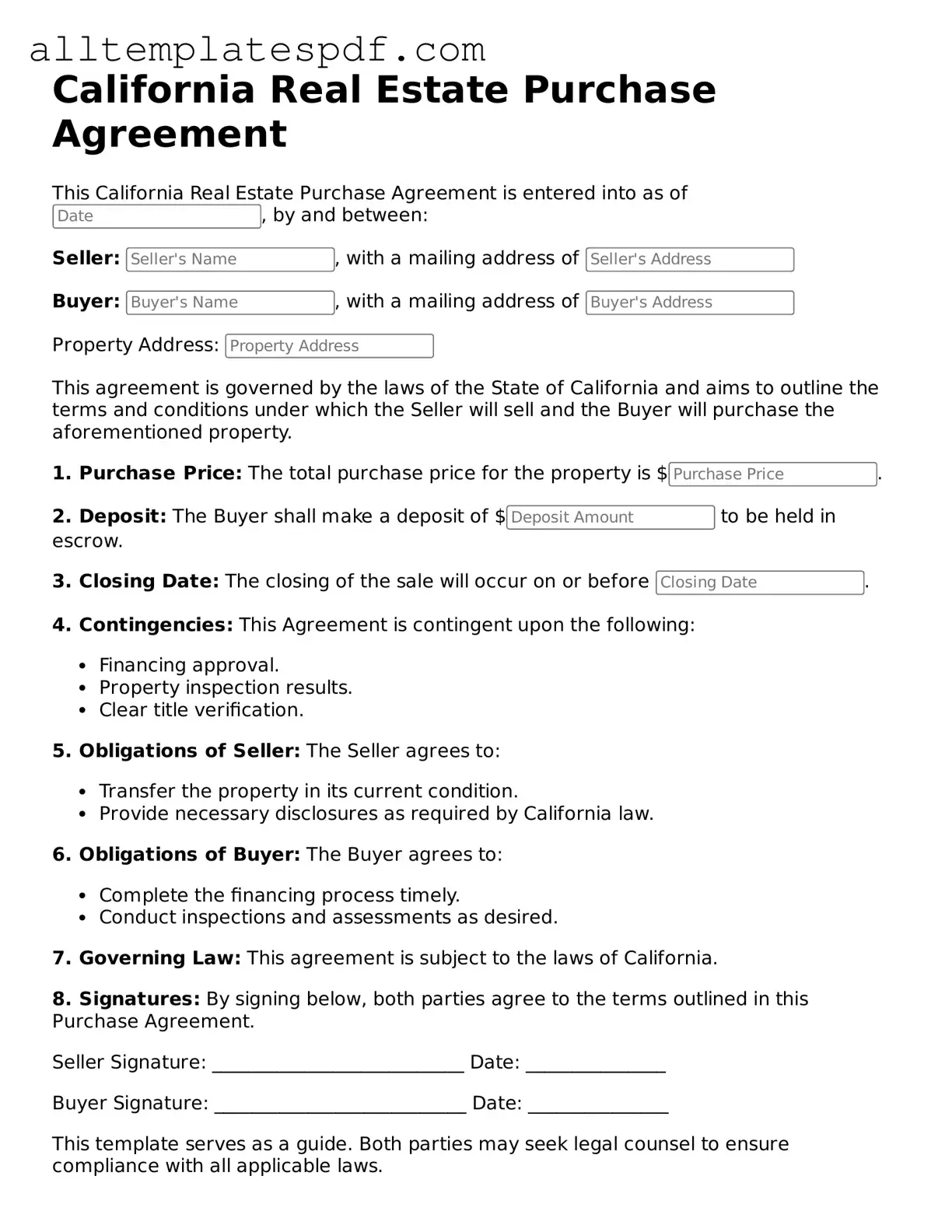Filling out the California Real Estate Purchase Agreement form can be a daunting task. Many buyers and sellers make common mistakes that can lead to delays or complications in the transaction process. Understanding these pitfalls is crucial for a smooth real estate experience.
One frequent mistake is failing to include all necessary parties in the agreement. It’s essential to list all buyers and sellers involved. Omitting a party can lead to legal issues down the line, as everyone with an interest in the property should be accounted for. Double-checking names and ensuring accuracy can save a lot of headaches later.
Another common error involves overlooking the property description. This section should provide a clear and complete description of the property being sold. Inaccuracies can create confusion and may even lead to disputes. Ensure that the legal description matches what is recorded with the county assessor’s office.
Many people also forget to specify the purchase price clearly. While it may seem straightforward, ambiguity can lead to misunderstandings. Clearly stating the amount in both numerical and written form helps prevent any miscommunication between parties.
Additionally, buyers often neglect to review the contingencies included in the agreement. Contingencies protect buyers by allowing them to back out of the deal under certain conditions, such as securing financing or completing a satisfactory inspection. Without these, buyers may find themselves locked into a deal that doesn’t work for them.
Another mistake is not addressing the earnest money deposit properly. This deposit shows the seller that the buyer is serious about the purchase. Specify the amount and the timeline for when this deposit will be made. Failing to do so can lead to uncertainty and potential disputes.
People sometimes overlook the closing date. This date is critical as it marks when the transaction is finalized. A vague or missing closing date can lead to confusion and delays. It’s important to agree on a date that works for all parties involved.
Buyers and sellers may also forget to include any personal property that is part of the sale. Items like appliances, fixtures, or furniture should be explicitly listed in the agreement. This helps avoid disputes over what is included in the sale.
Finally, many individuals neglect to seek professional advice when filling out the form. Real estate transactions can be complex, and having a knowledgeable agent or attorney can help ensure that the agreement is filled out correctly. Their expertise can catch mistakes that you might overlook.
By being aware of these common mistakes, you can navigate the California Real Estate Purchase Agreement more confidently. Attention to detail and seeking guidance can make a significant difference in your real estate journey.
